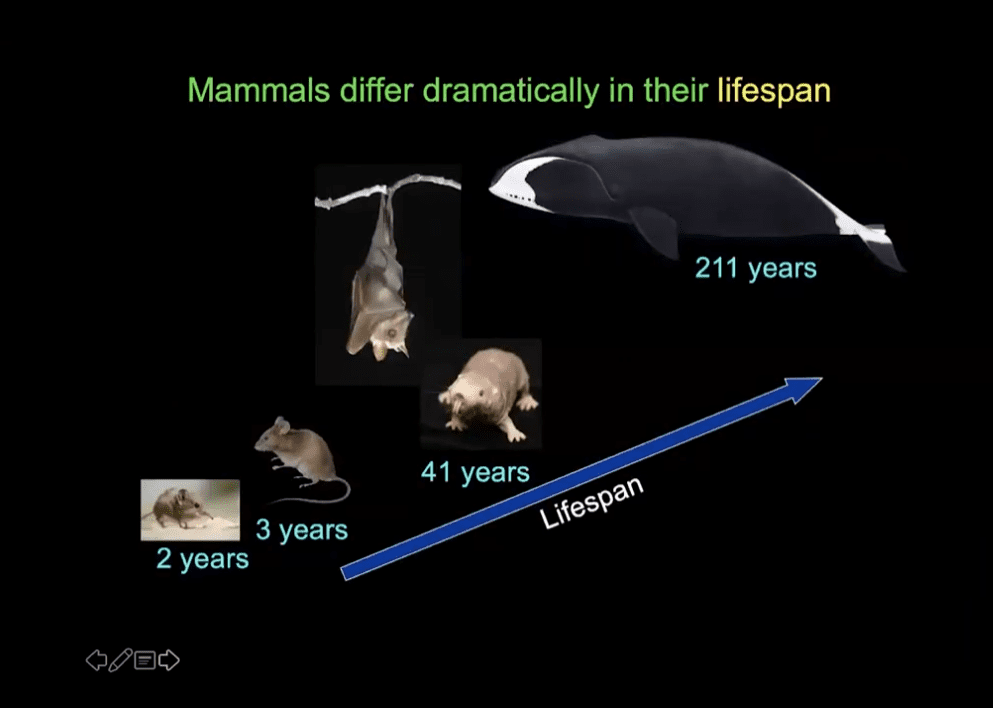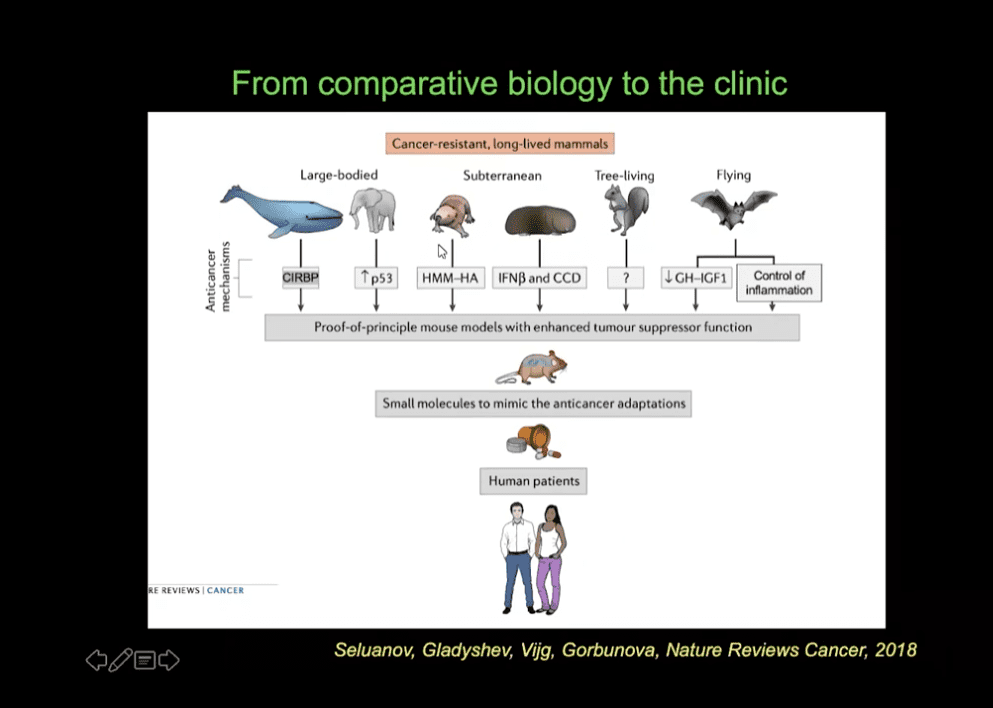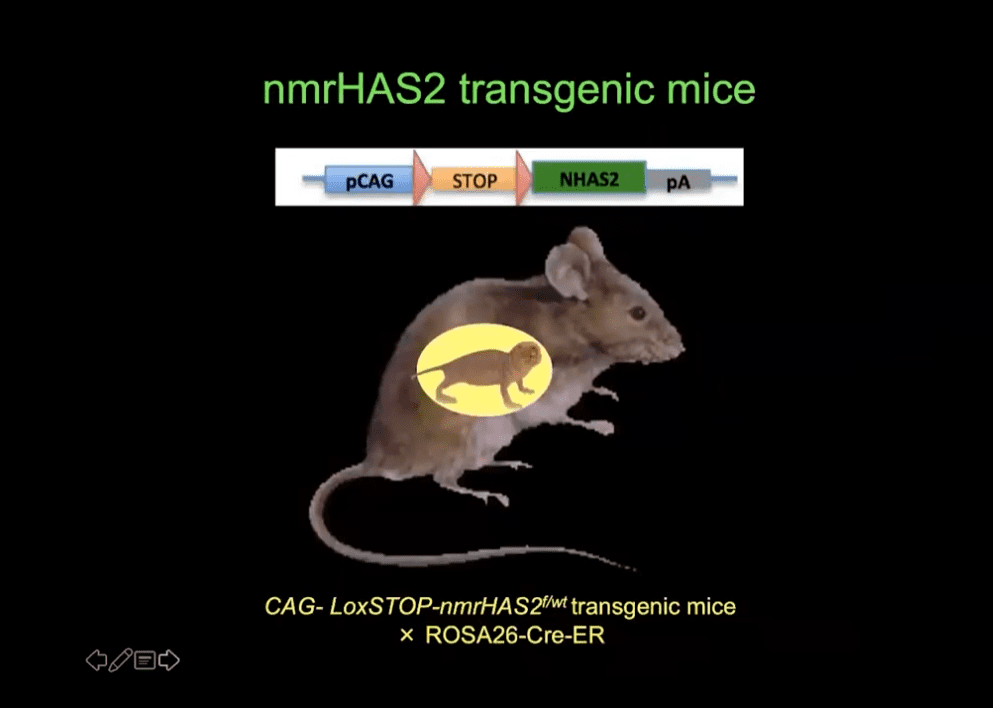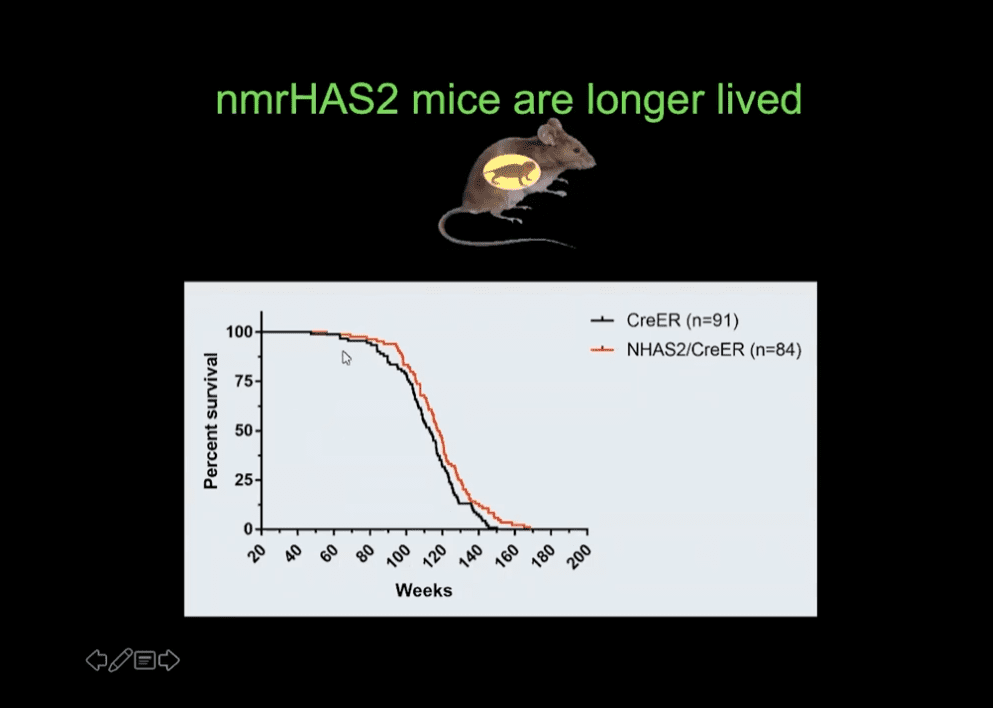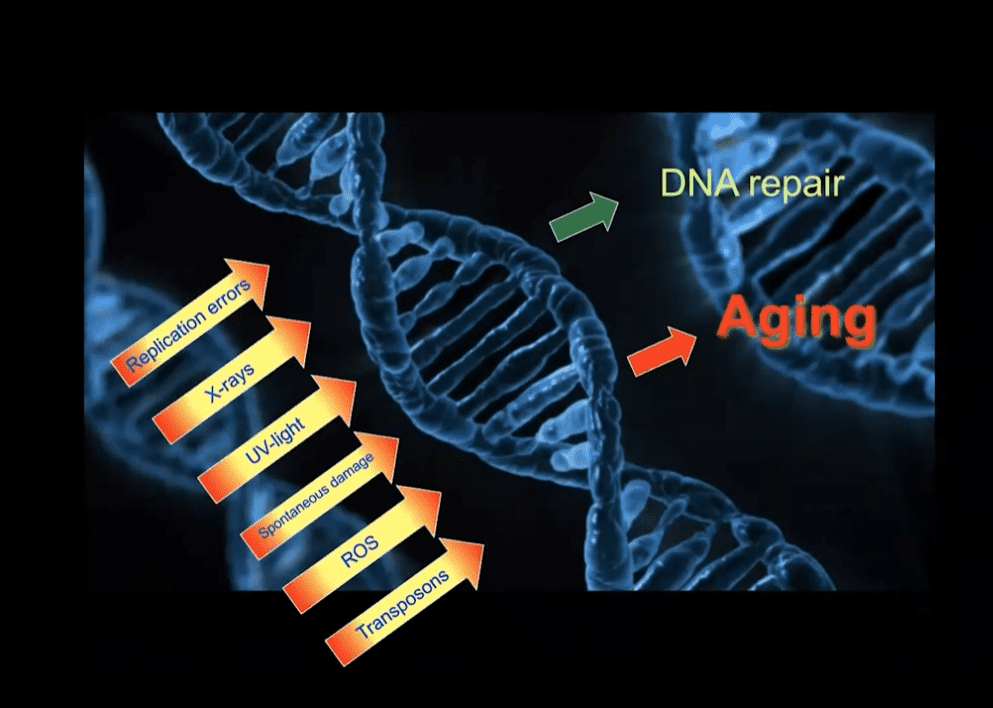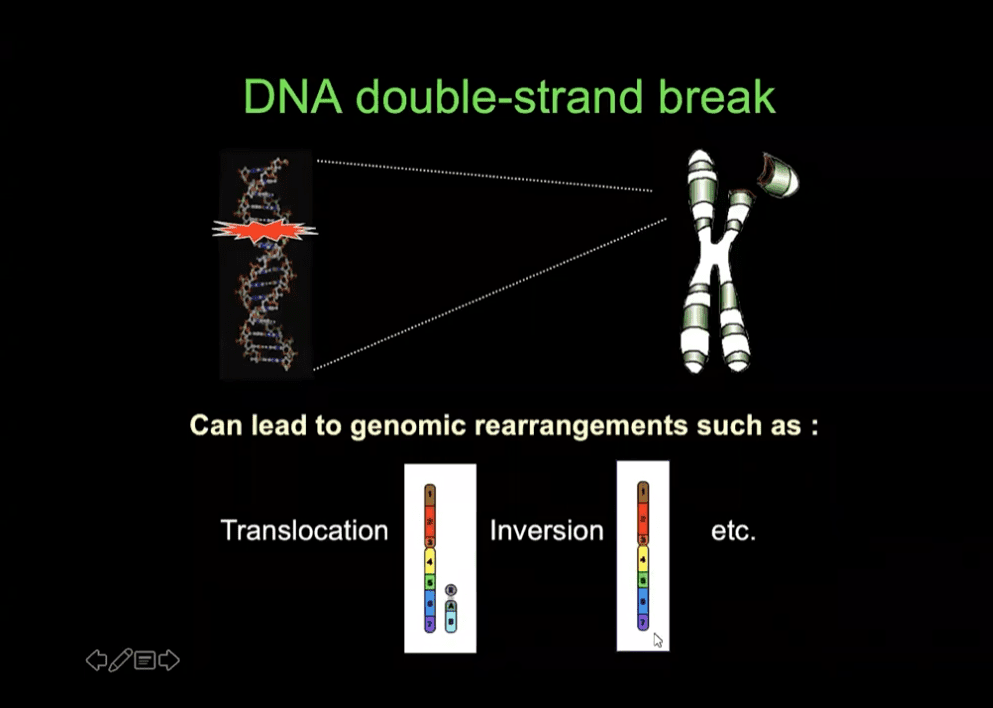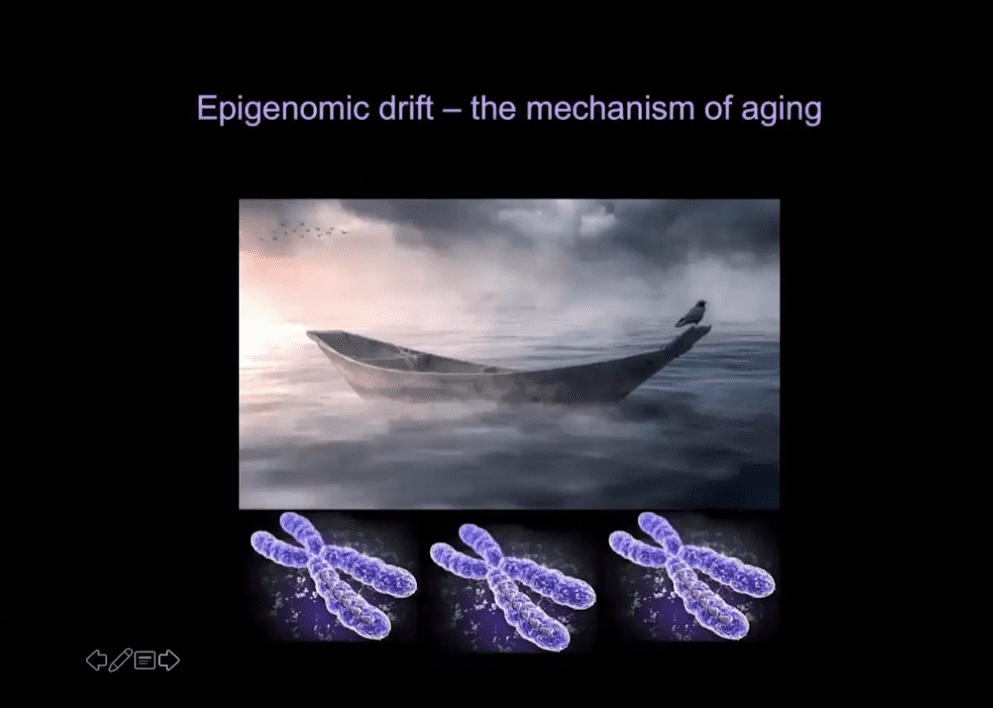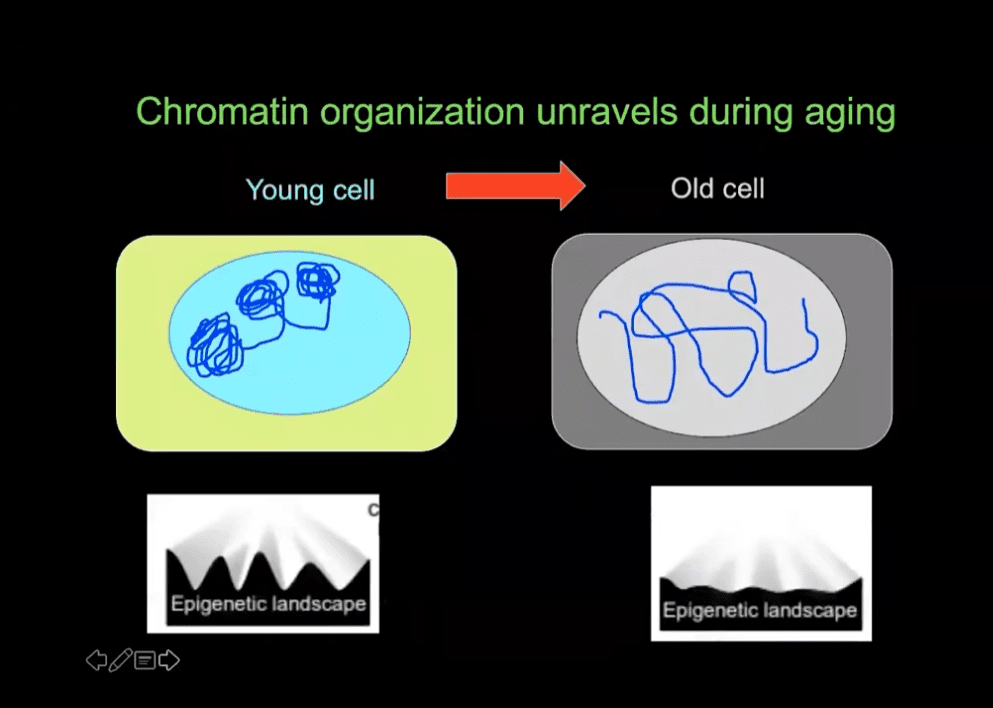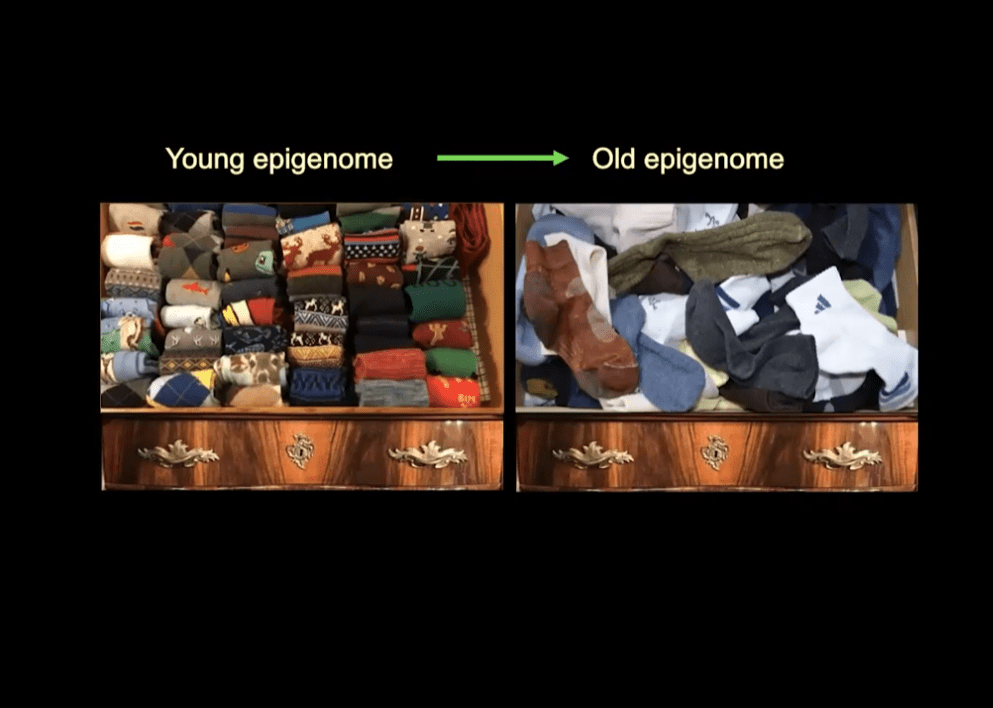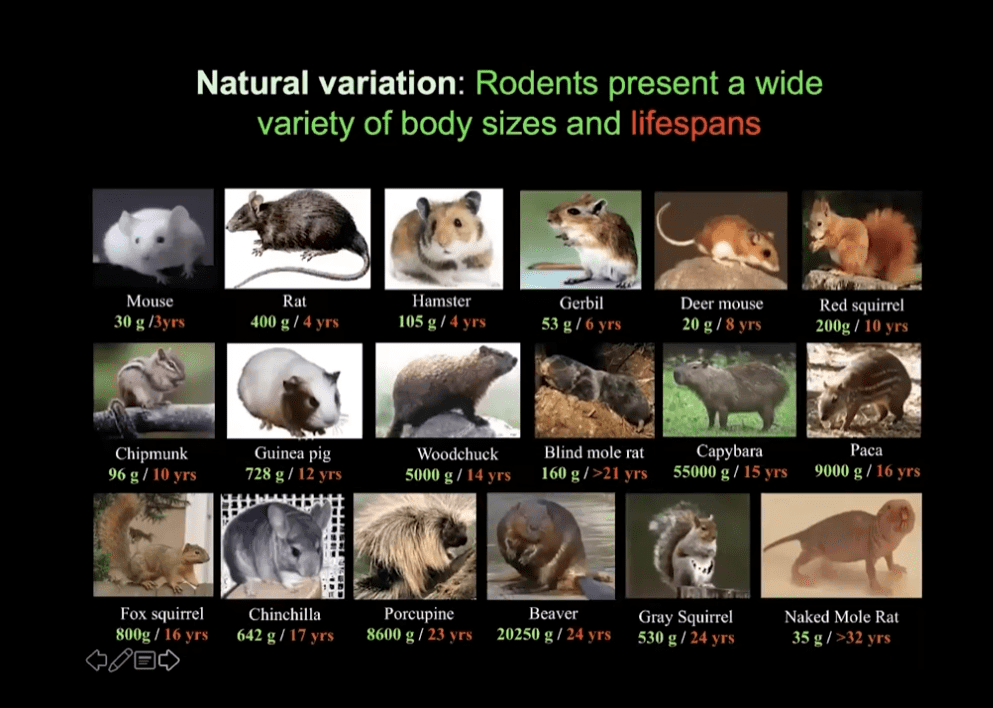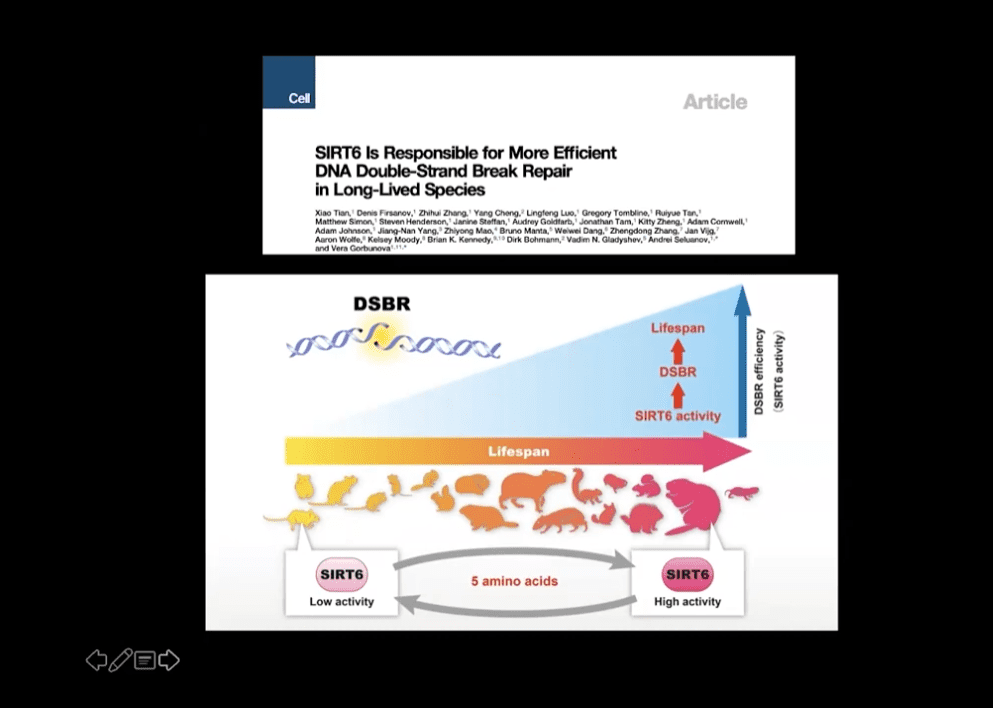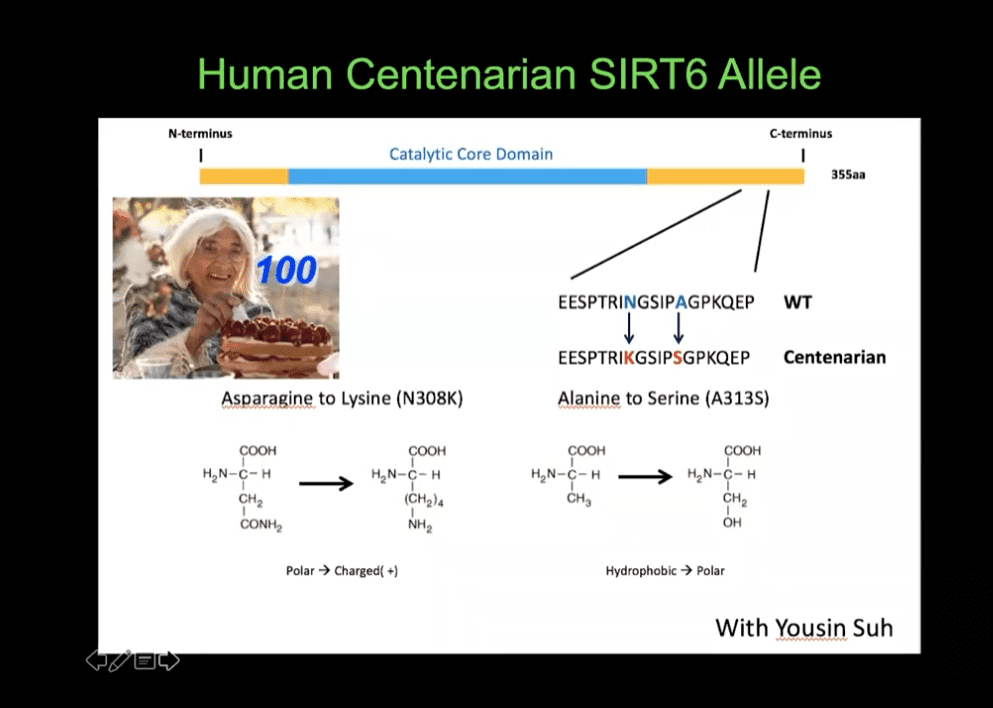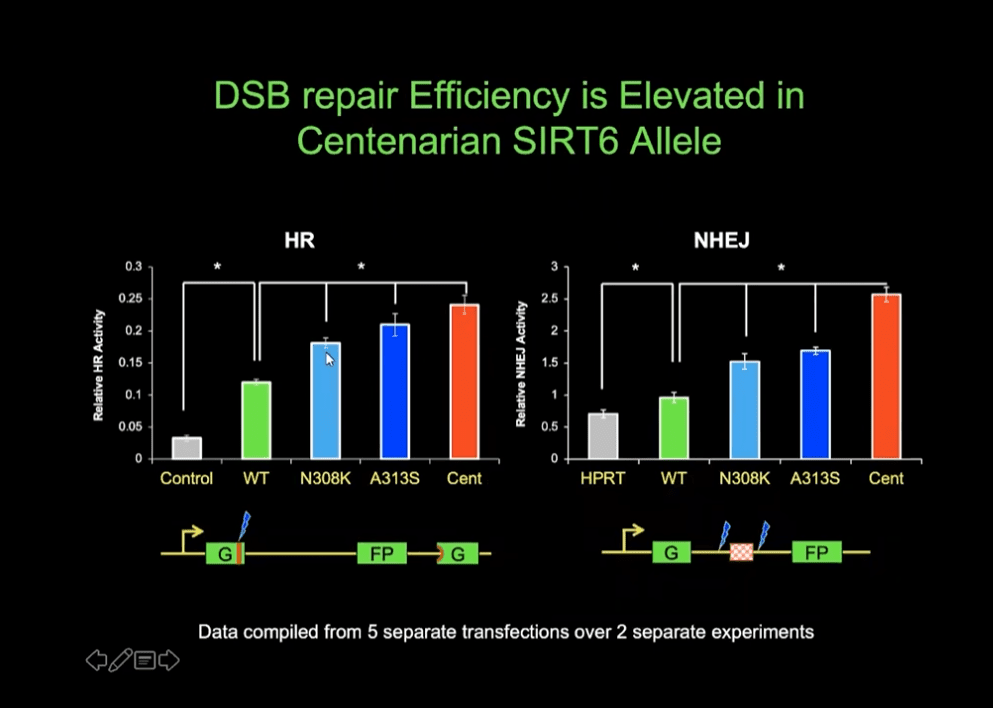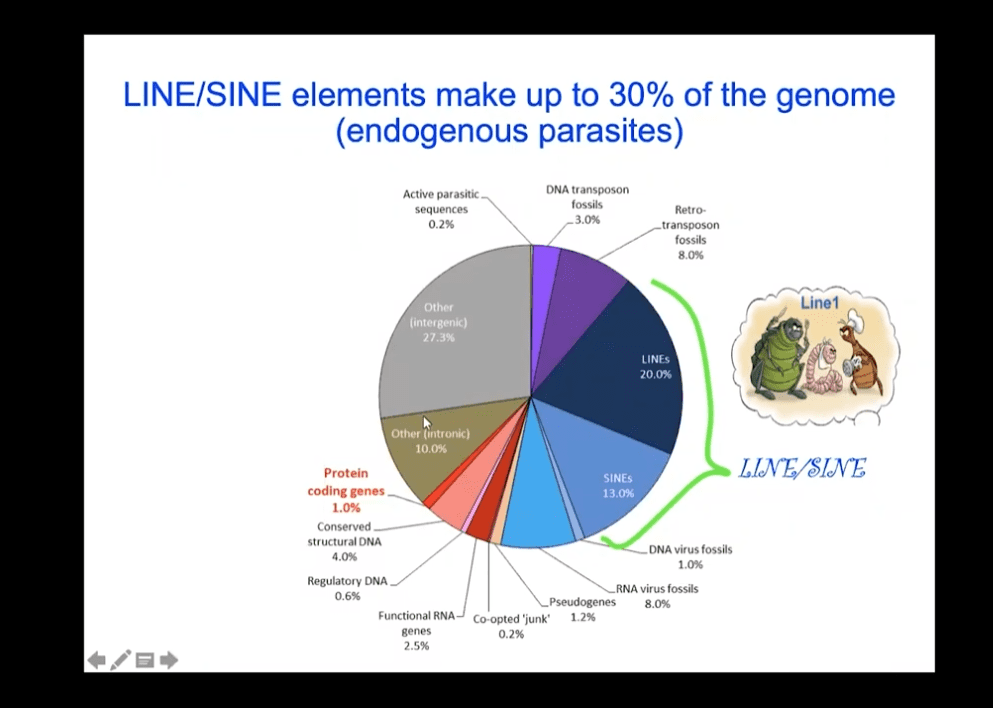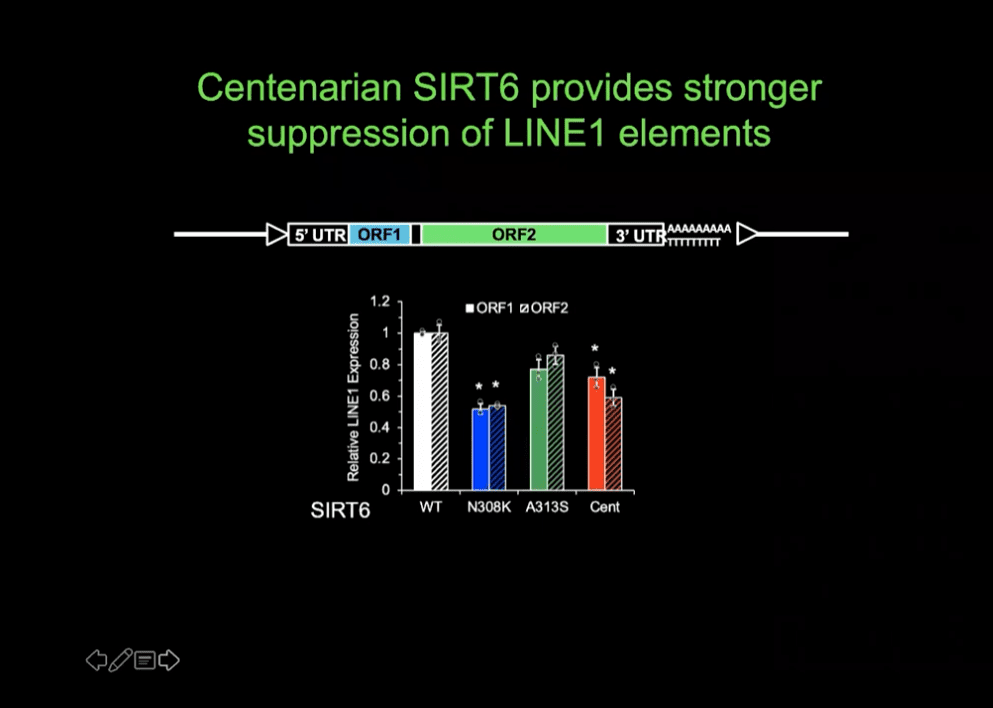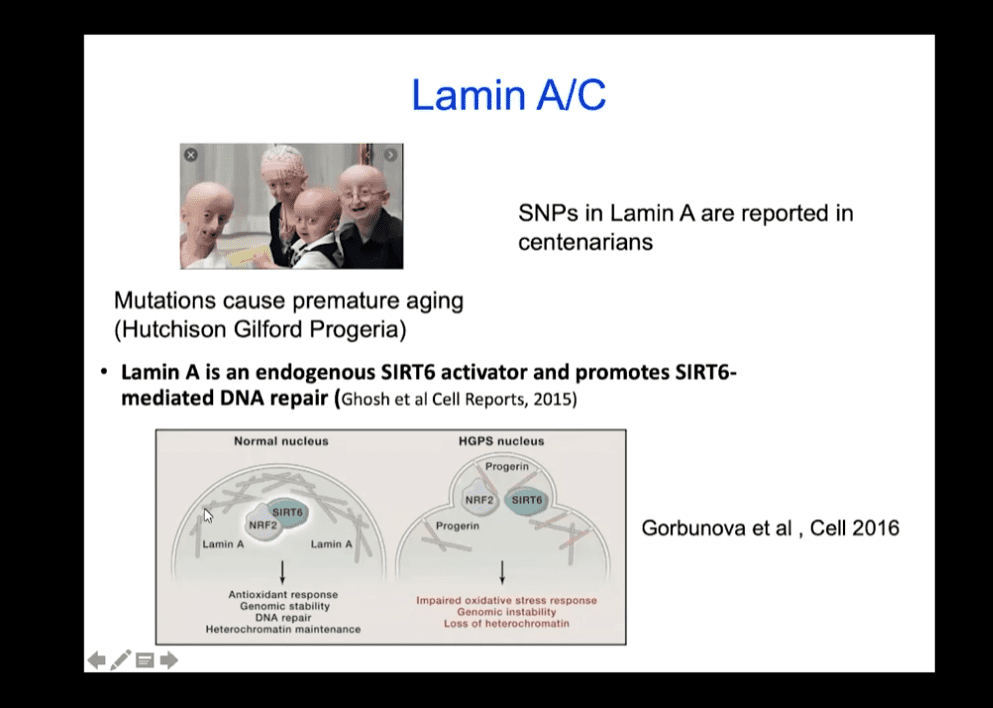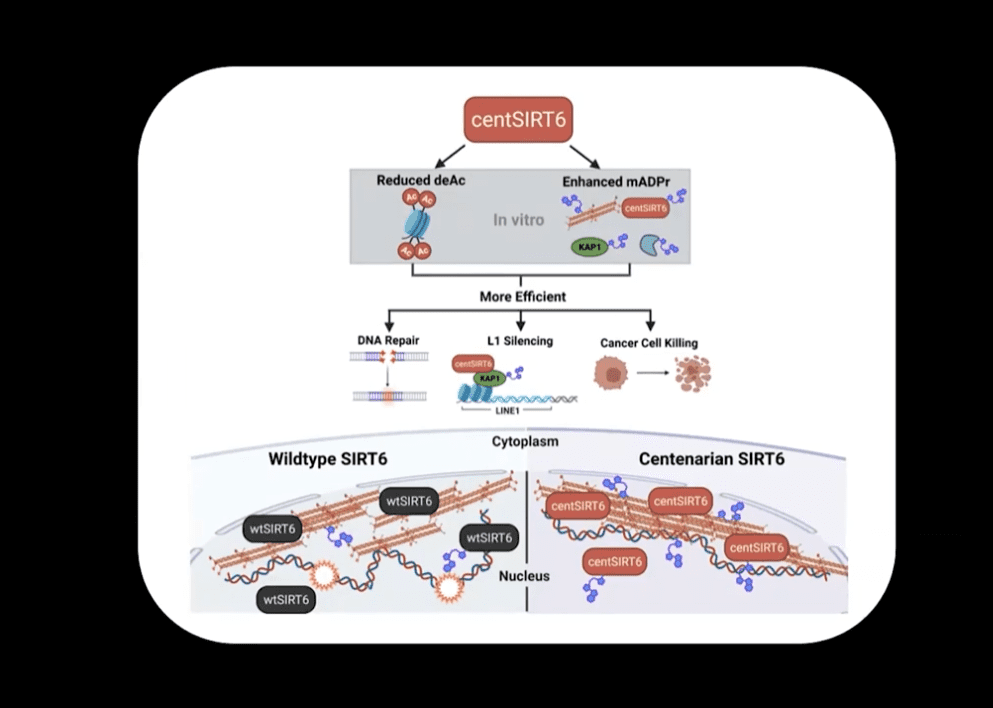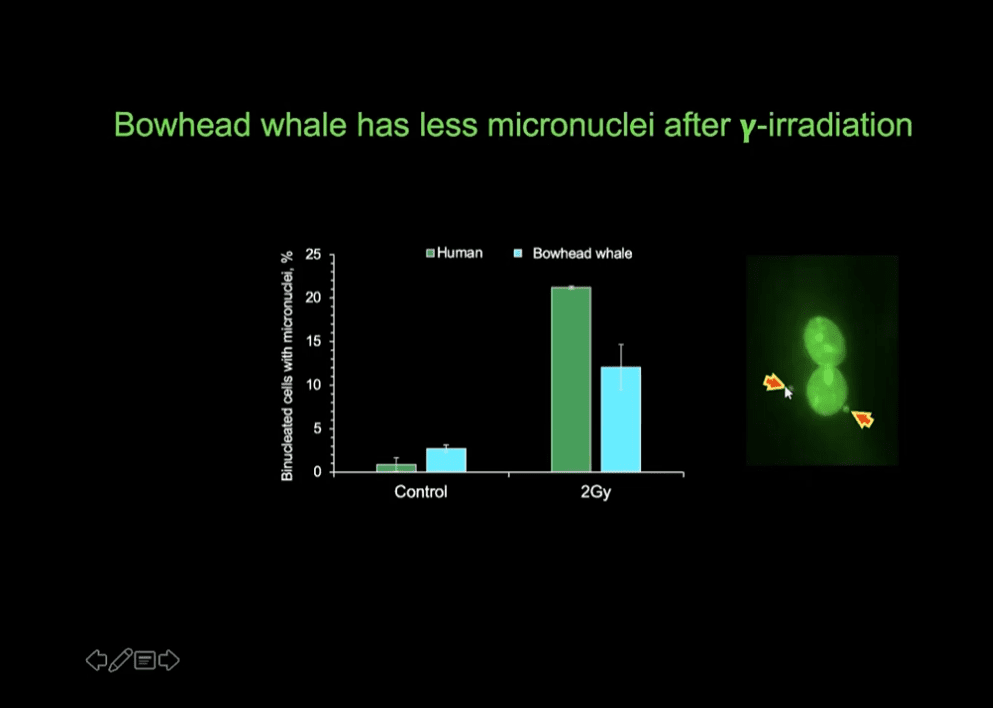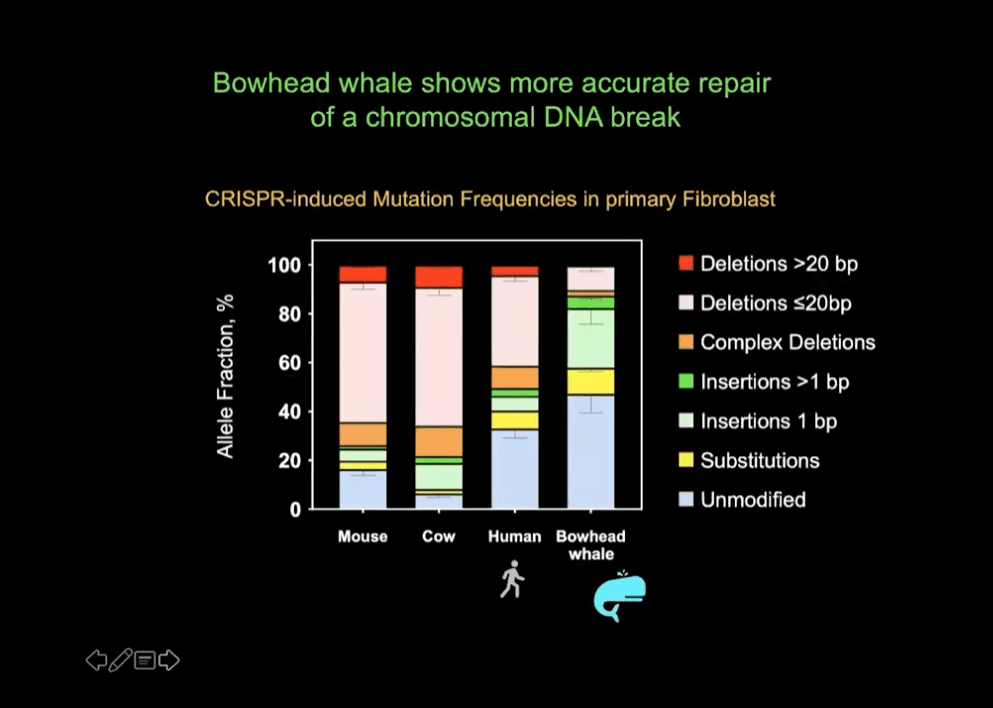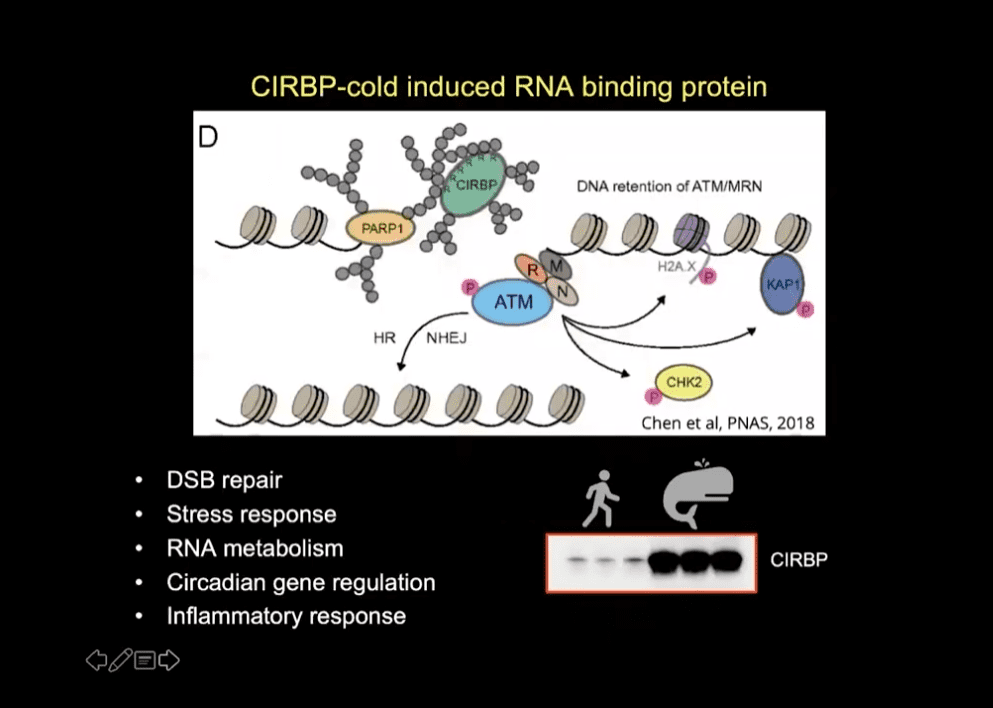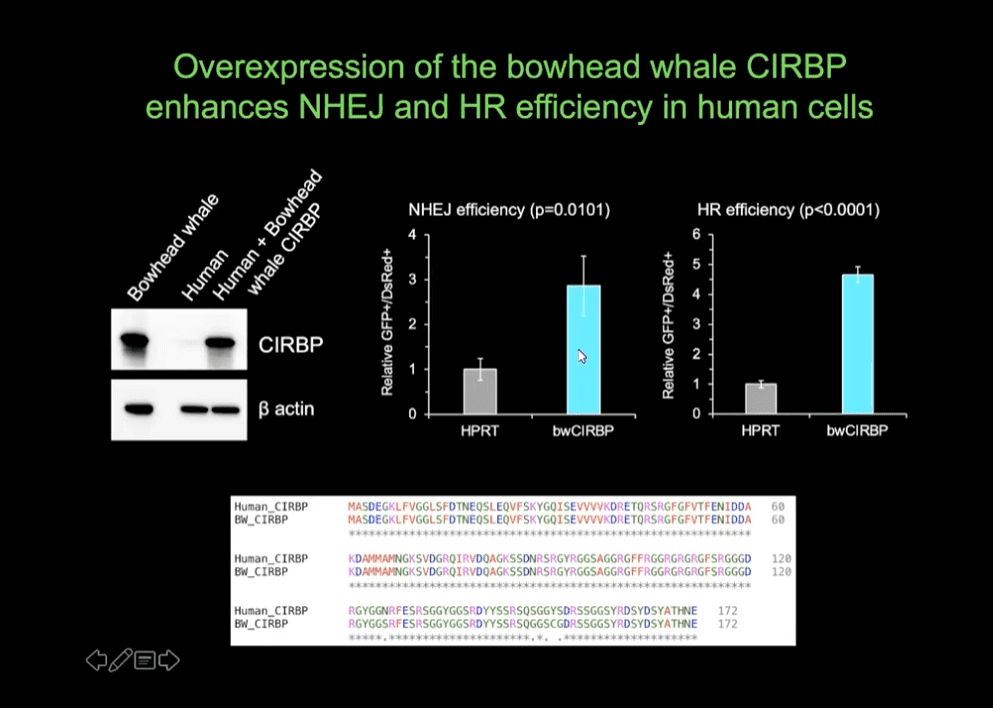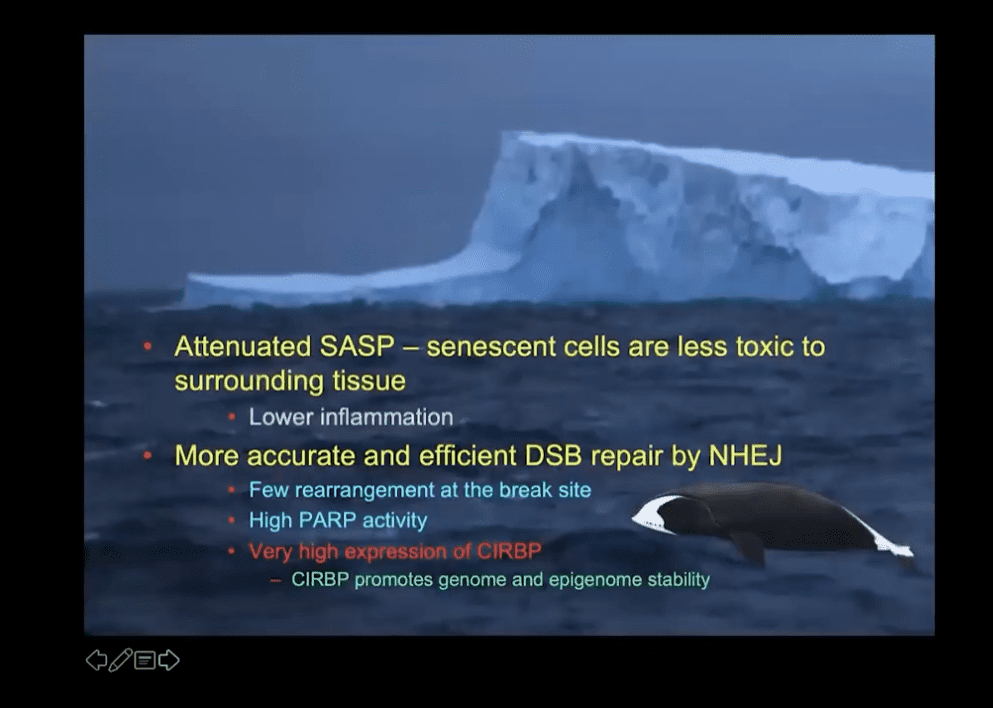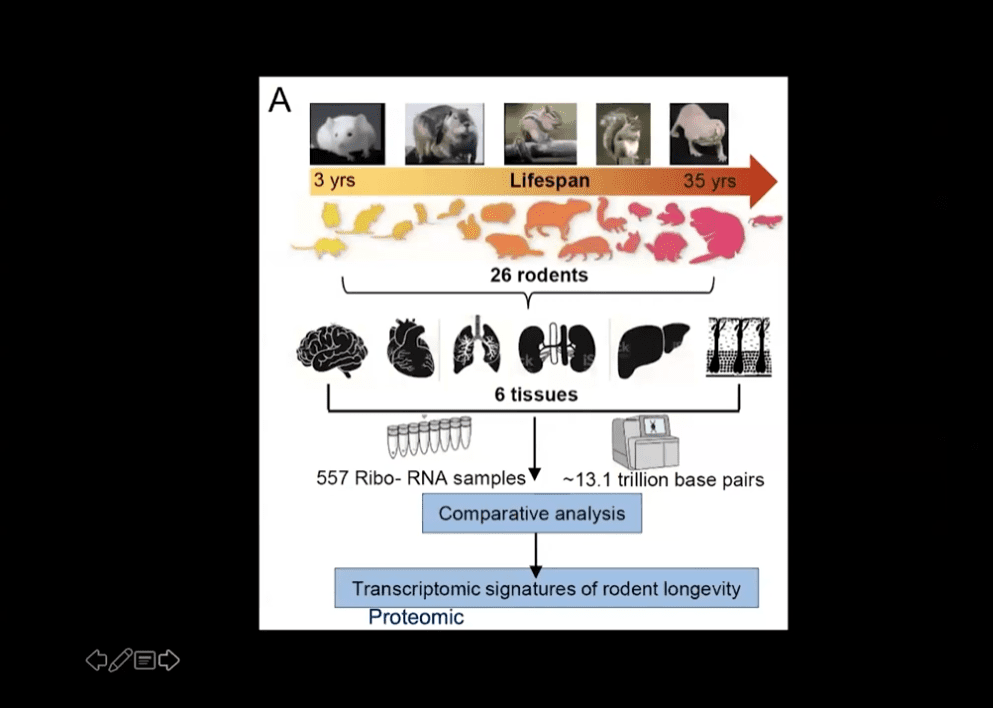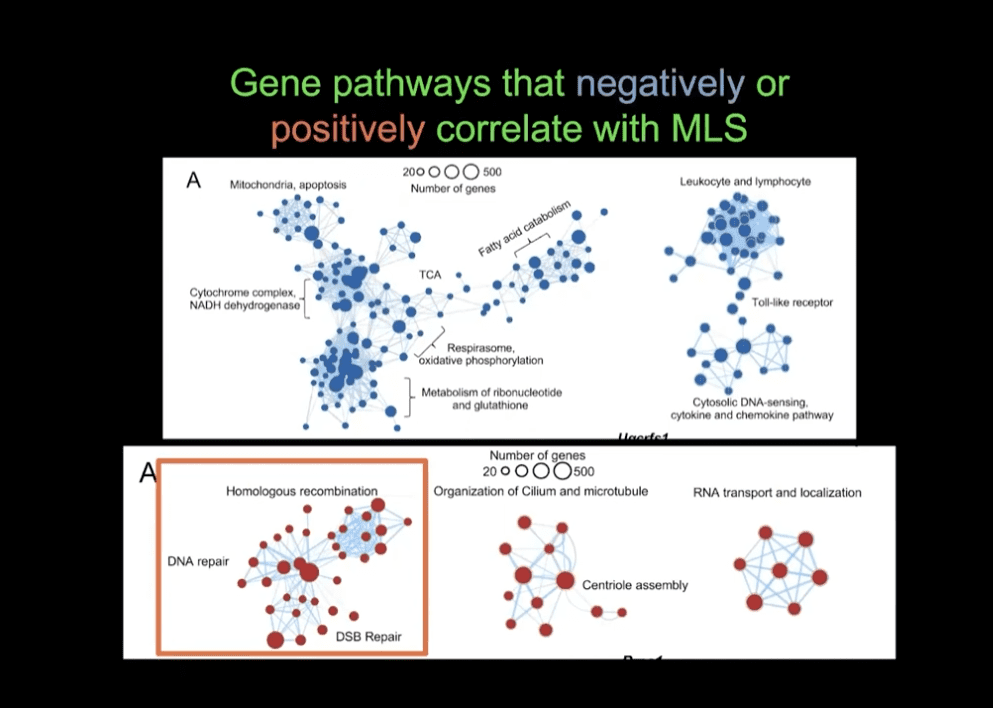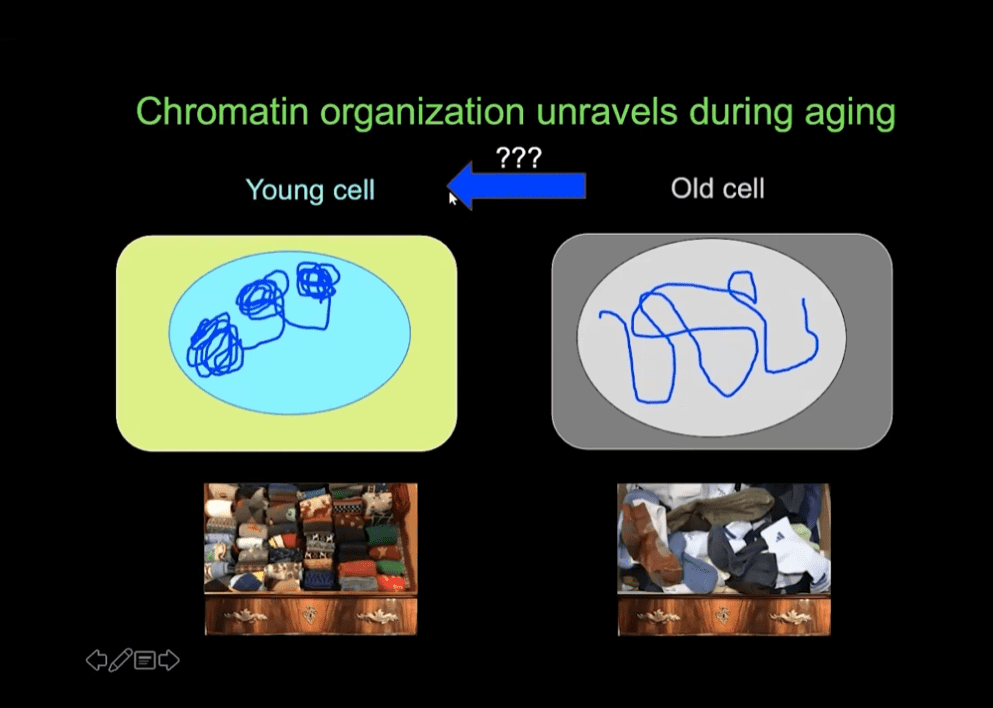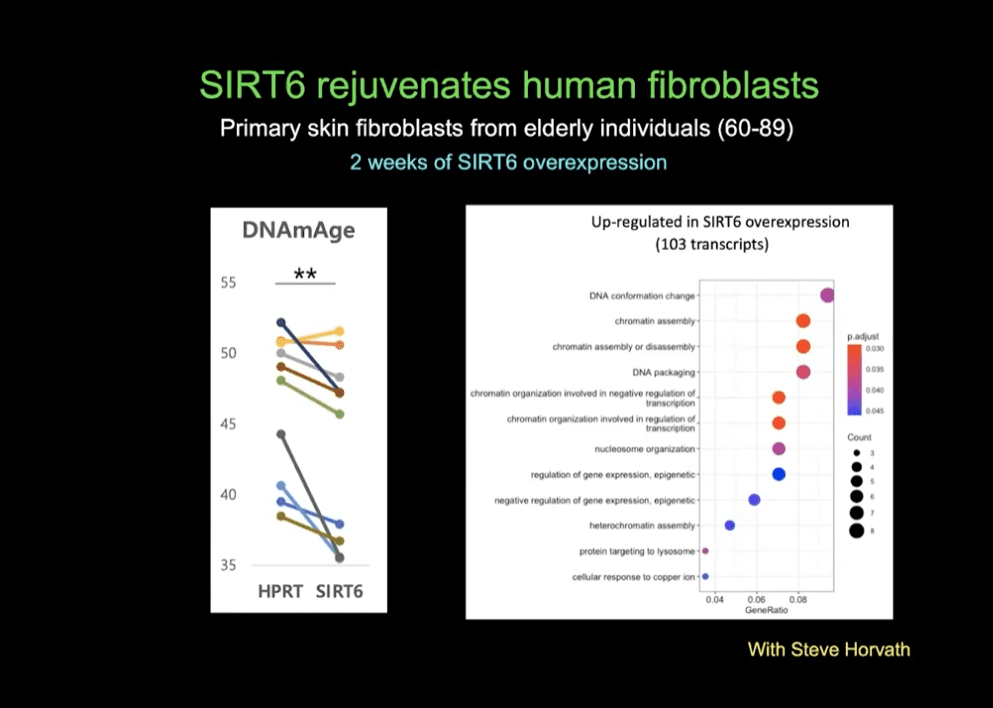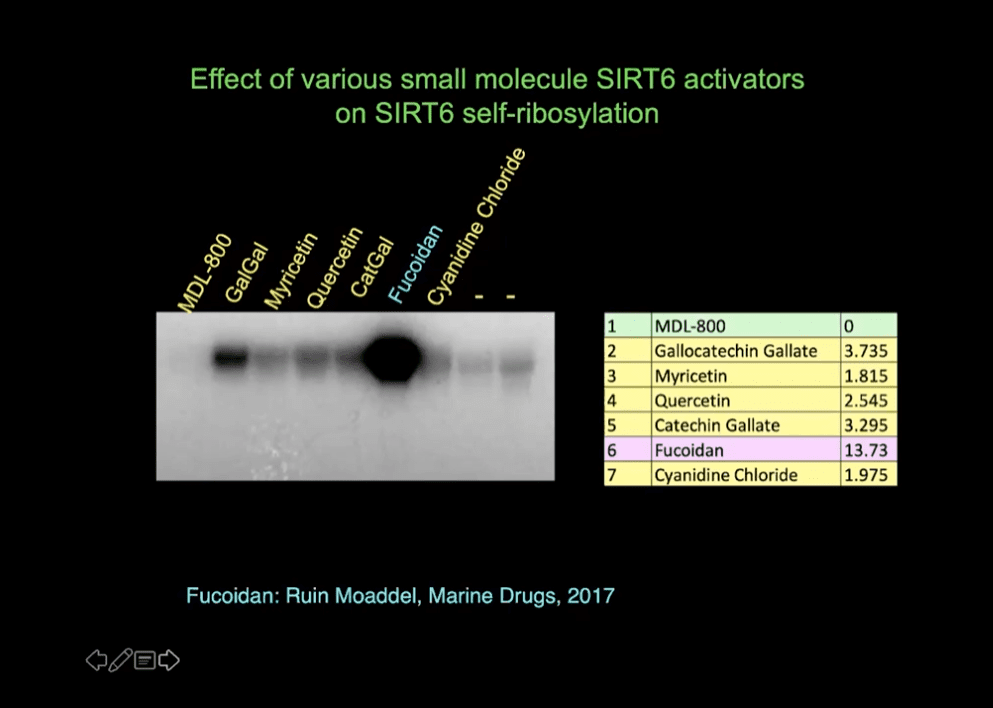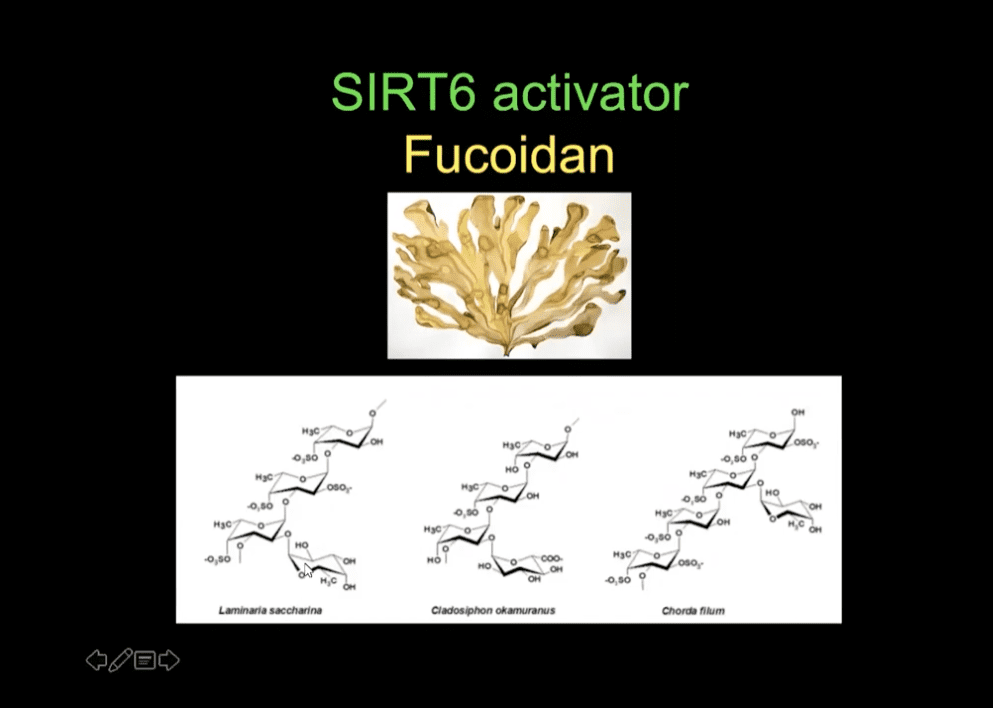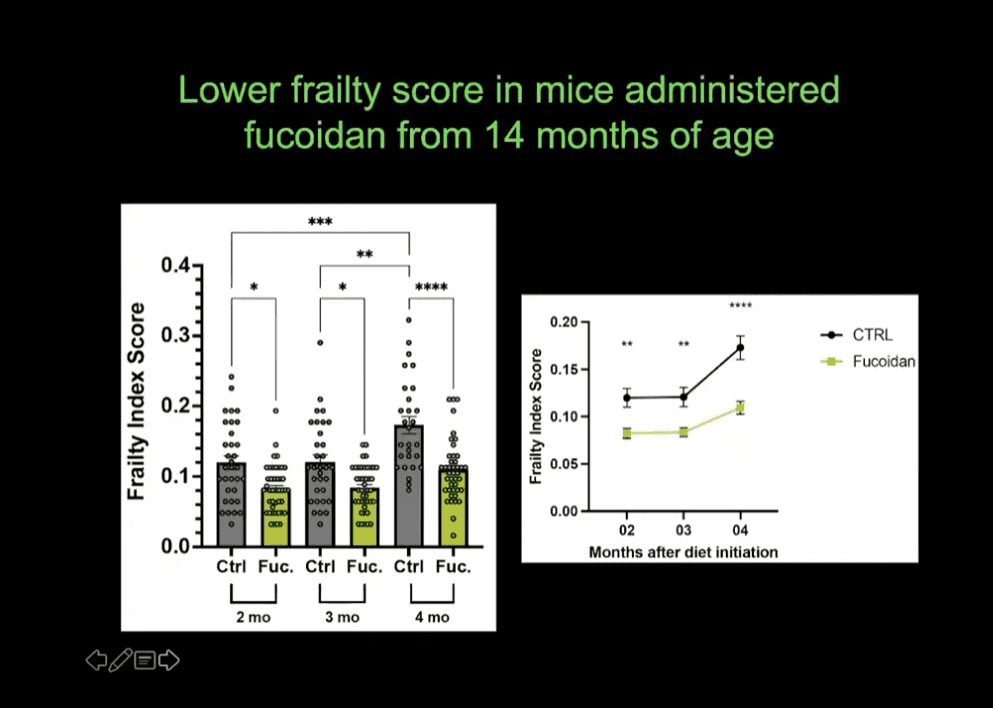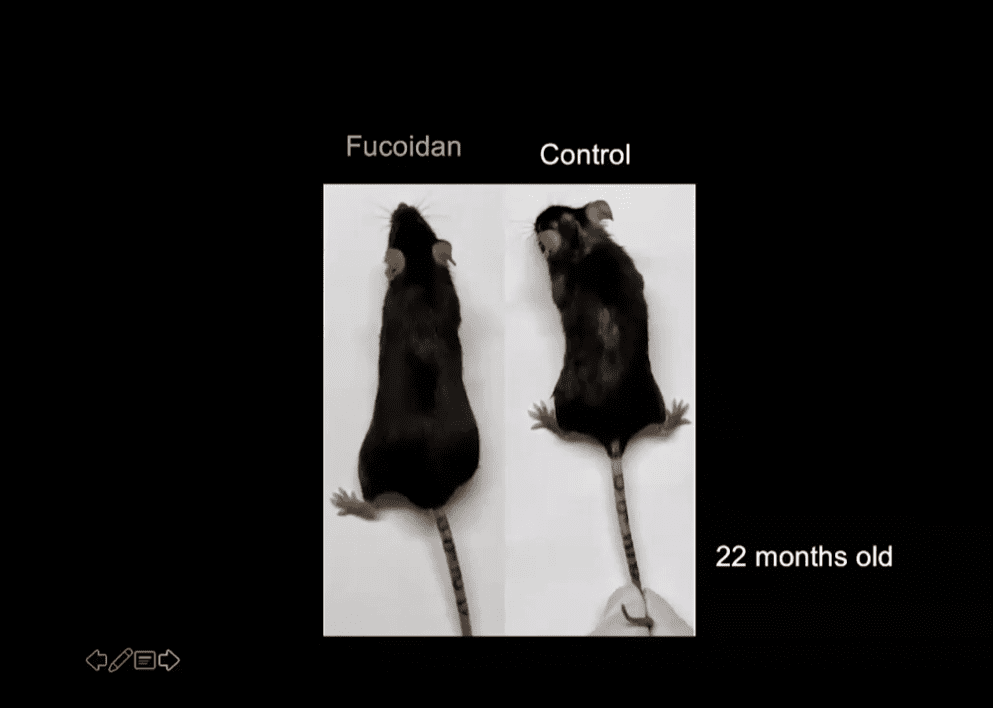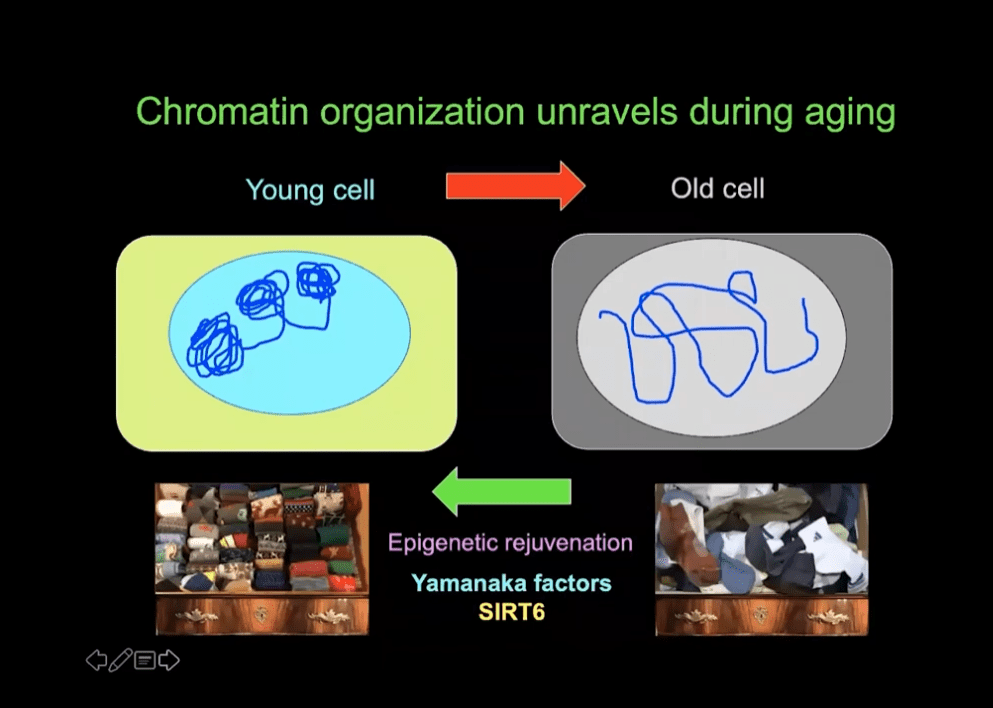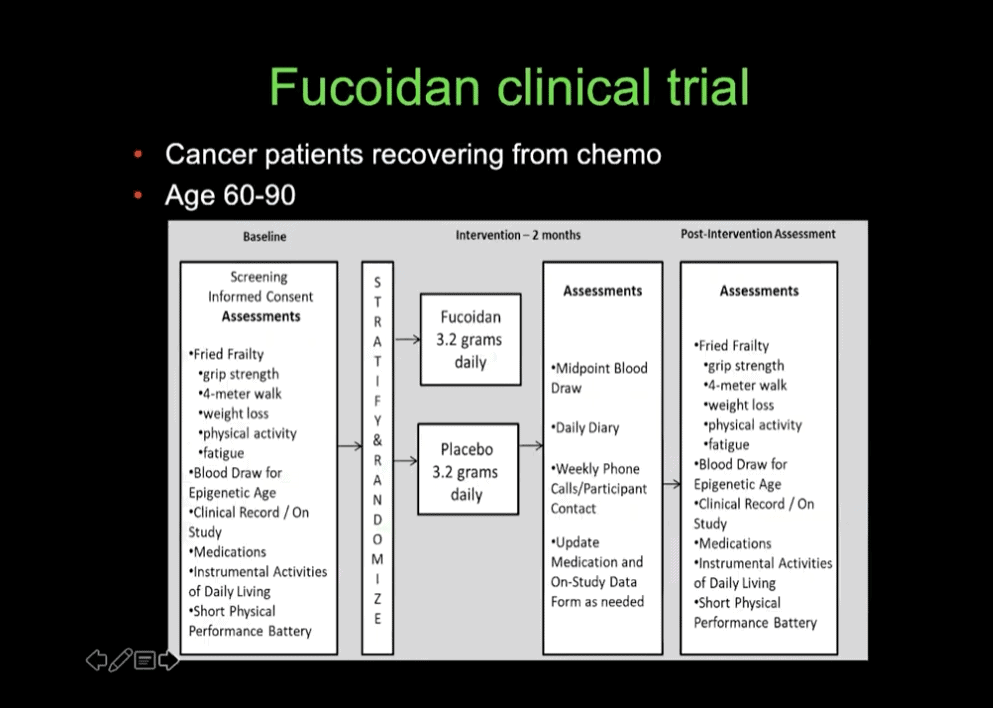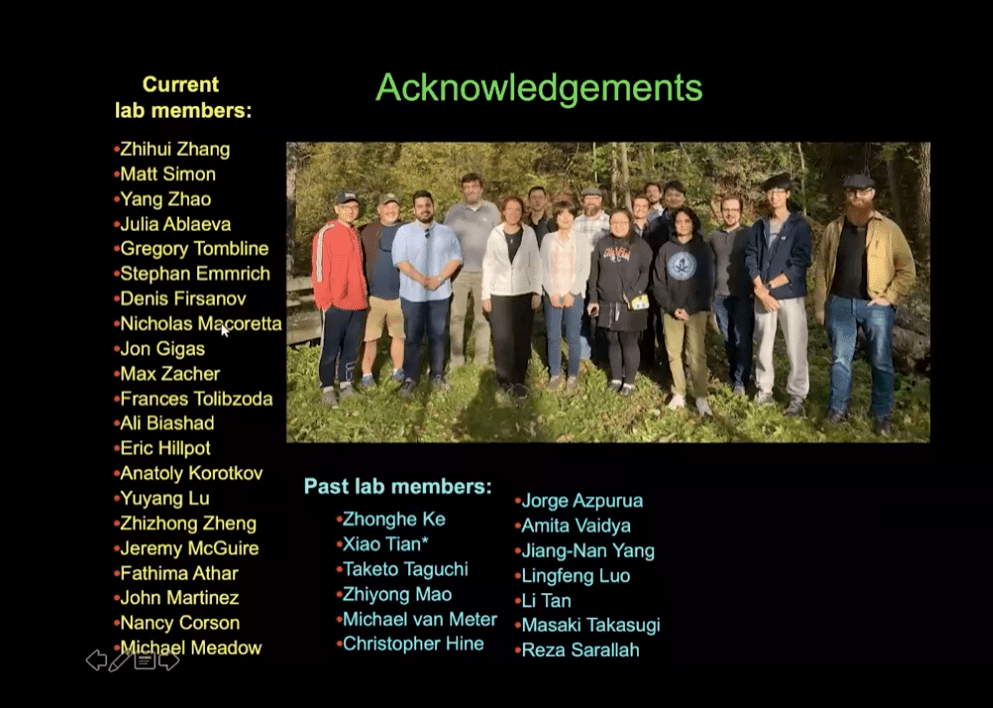Presenter

Vera Gorbunova, University of Rochester
Vera Gorbunova is an endowed Professor of Biology at the University of Rochester and a co-director of the Rochester Aging Research Center. Her research is focused on understanding the mechanisms of longevity and genome stability and on the studies of exceptionally long-lived mammals.Dr. Gorbunova pioneered comparative biology approach to study aging and identified rules that control the evolution of…
Mechanisms of longevity lessons from long-lived mammals
Long lived mammals can teach us a lot about lifespan extension. Analyzing species like the bowhead whale and naked molerats reveals specific mechanisms which can be tested in mice and translated into human therapeutics.
Naked Mole Rat – Lives for 41 years and is resistant to cancer, osteoarthritis, and ischemia reperfusion. They have evolved to have 10x more hyaluronic acid than in humans. Gorbunova’s group induced increased hyaluronic acid in regular mice and demonstrated cancer resistance and slight lifespan extension.
Rodent Species (20 varieties) – Many different damage mechanisms converge on DNA repair. Double Strand Break repair in particular seems to be a major component of epigenomic drift – the accumulation of genetic damage and mutations over time as cells divide. The epigenetic landscape becomes less defined and genetic expression becomes more random. There is a strong correlation between maximum lifespan of rodents and double strand break repair, and SIRT6 seems to be responsible for this correlation. Human centenarians appear to have a correlation with SIRT6 mutations as well. Centenarian SIRT6 also appears to be better at suppressing transposon elements within the genome.
Bowhead Whale – Lives for 211 years, 40 ton body mass, and has much better non-homologous end joining (NHEJ) DNA repair efficiency. The bowhead whale is much better at avoiding DNA mutations. Gorbunova believes CIRBP – cold inducable RNA binding protein – is responsible. It is found in much higher quantities in this whale than in humans and is involved in double strand break repair, stress response, RNA metabolism, circadian gene regulation, and the inflammatory response. Overexpressing CIRBP in human cells dramatically improves DNA repair. Keeping human cells at 22C for just 2 hours was enough to stimulate better NHEJ.
DNA repair, double strand break repair, and homologous recombination genes are highly correlated with longer maximum lifespan.
Gorbunova discovered that some types of Fucoidan (a polysaccharide abundant in seaweed) activates SIRT6 self-ribosylation. Trials in aged mice showed reduced frailty score after several months of fucoidan administration. She is gearing up for a human clinical trial for fucoidan supplementation of chemo recovery patients.


